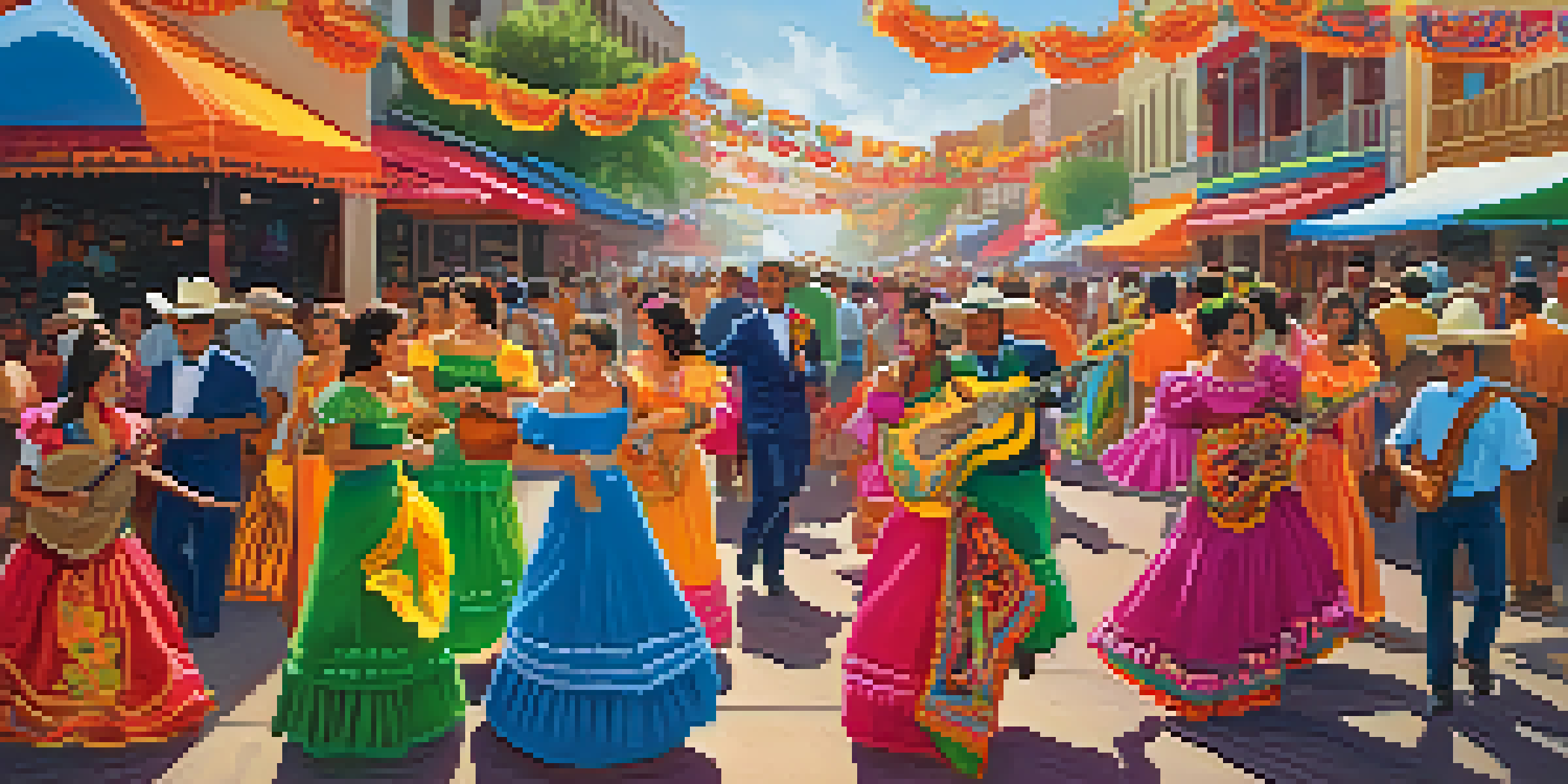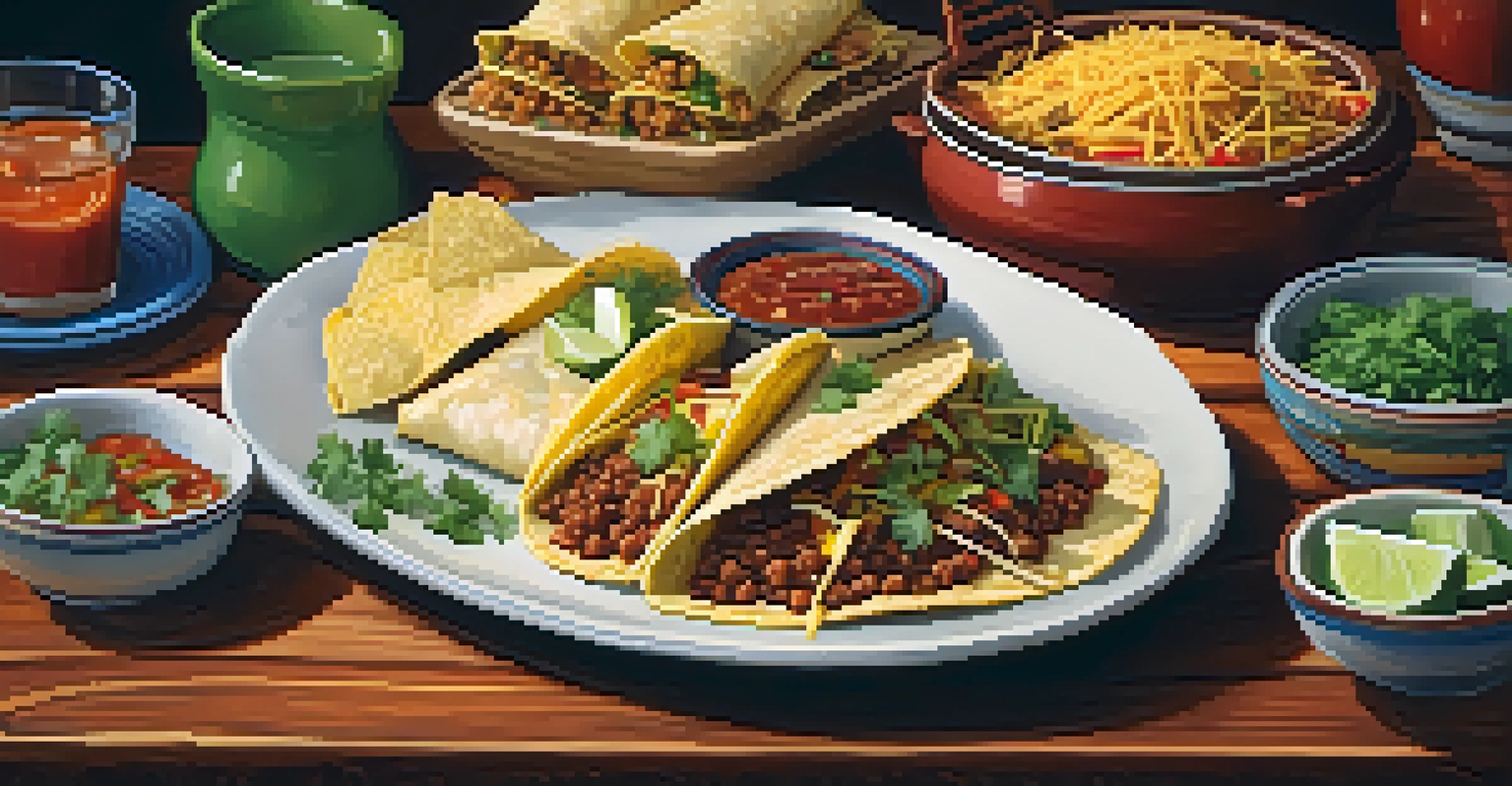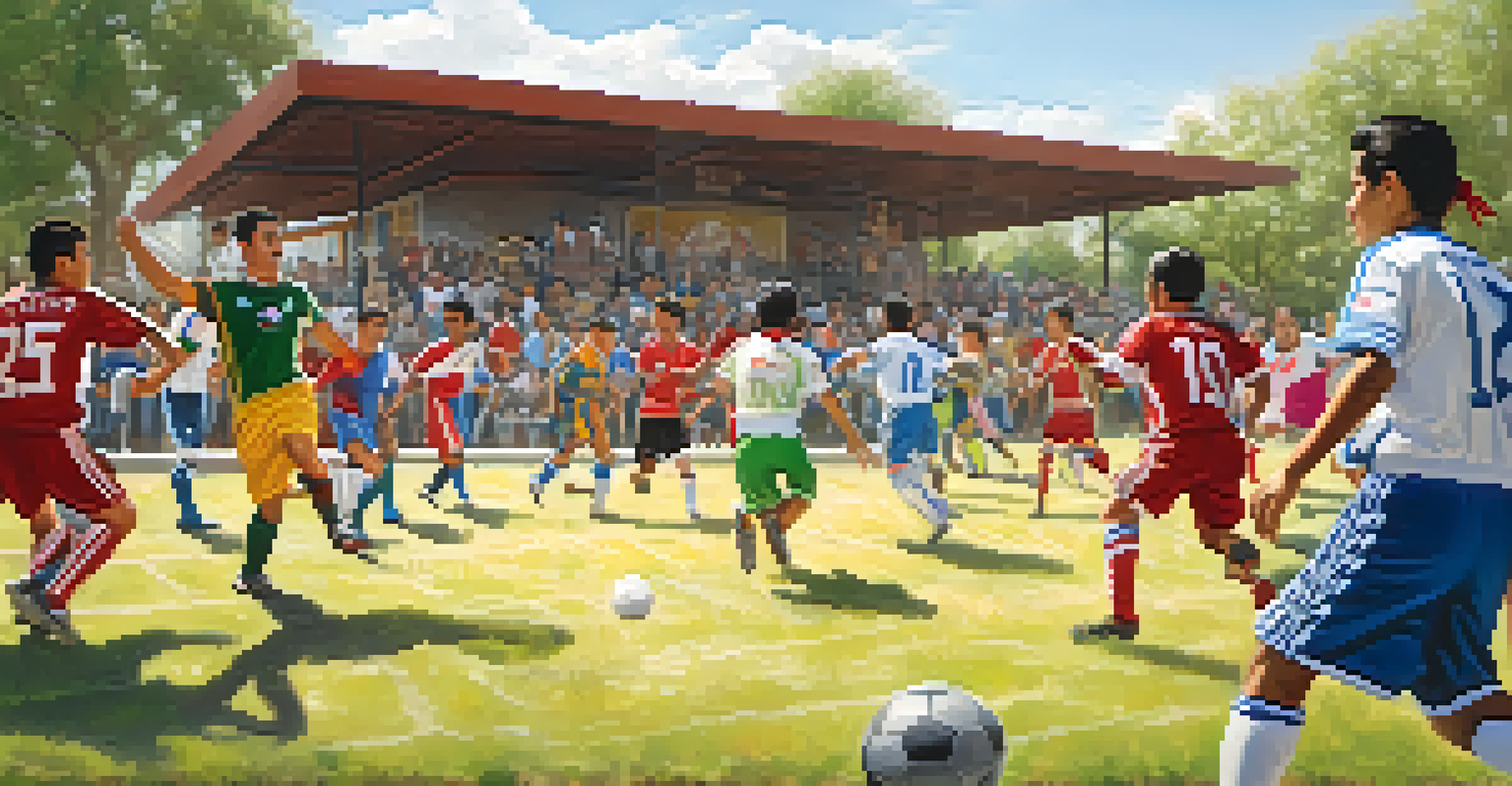The Impact of Mexican Heritage on Texas Culture

A Rich Historical Tapestry: The Roots of Mexican Influence
Texas's history is a colorful blend of indigenous cultures and Spanish colonization, with Mexican heritage playing a pivotal role. The state's borders were once part of Mexico, and this deep historical connection continues to influence Texas culture today. From the early days of exploration to the establishment of ranching and farming communities, Mexican traditions have woven themselves into the fabric of Texan identity.
In a land where cultures collide, the richness of a shared heritage becomes a treasure for all.
As settlers moved into Texas, they brought with them their customs, language, and traditions, which have evolved over time but still resonate strongly. This blend of cultures is evident in everything from the architecture of historic towns to the folk tales passed down through generations. Understanding this historical context provides insight into why Mexican heritage is so integral to Texas's cultural landscape.
The legacy of the Mexican-American War and the subsequent annexation of Texas further cemented these cultural ties. Today, many Texans proudly celebrate their Mexican roots, showcasing the resilience and richness of this heritage in their everyday lives.
Culinary Delights: Mexican Food's Influence on Texas Cuisine
When you think of Texas, it’s impossible not to picture mouthwatering barbecue and spicy Tex-Mex dishes. Mexican cuisine has had a profound impact on what Texans eat, blending flavors and techniques to create something uniquely Texan. Tacos, enchiladas, and tamales are just a few staples that have become synonymous with Texas culture, reflecting the rich heritage of Mexican cooking.

Tex-Mex, a fusion of Mexican and American culinary traditions, showcases this delicious marriage of flavors. Whether it’s the use of fresh ingredients like cilantro and lime or the incorporation of chili peppers for that extra kick, the influence of Mexican cooking is undeniable. Many Texan families have their own recipes passed down through generations, celebrating their cultural heritage at family gatherings.
Mexican Heritage Shapes Texas Culture
Texas's rich cultural landscape is deeply influenced by its historical ties to Mexican heritage, evident in traditions, language, and celebrations.
Food festivals across Texas often highlight this fusion, bringing communities together to celebrate their shared love of Mexican cuisine. From street vendors to high-end restaurants, the culinary landscape in Texas is a testament to the lasting impact of Mexican heritage.
Festivals and Celebrations: Honoring Mexican Traditions
Festivals in Texas are vibrant celebrations that highlight the state's Mexican heritage, showcasing traditions that date back centuries. Events like Cinco de Mayo and Día de los Muertos draw crowds from near and far, bringing communities together to honor cultural roots. These celebrations are not just about festivities; they serve as a reminder of the rich history and contributions of Mexican culture to Texas.
Food is a universal language that connects us, transcending borders and cultures.
During these festivals, you'll find colorful parades, traditional music, and dance performances that evoke a sense of pride among attendees. Mariachi bands fill the air with lively tunes, while folk dancers don elaborate costumes, captivating audiences with their graceful movements. Such events create an atmosphere of joy and unity, emphasizing the importance of cultural preservation.
Moreover, these celebrations often include delicious food, art, and crafts that reflect the creativity and spirit of the community. By participating in these festivals, Texans honor their heritage and foster a sense of belonging, making cultural celebrations an integral part of life in Texas.
Language and Literature: The Spanish Influence in Texas
Language is a significant aspect of culture, and in Texas, the influence of Spanish is undeniable. With a large population of Spanish speakers, Texas has embraced bilingualism, resulting in a unique blend of English and Spanish that captures the essence of its diverse heritage. This linguistic diversity enriches daily communication and enhances cultural exchange between communities.
Literature also reflects this blending of cultures, with authors like Sandra Cisneros and Luis Alberto Urrea exploring themes of identity and belonging. Their works often delve into the Mexican-American experience, highlighting the challenges and triumphs of living between two cultures. Through storytelling, they preserve the rich traditions and values of Mexican heritage for future generations.
Culinary Fusion Defines Texas Cuisine
Mexican cuisine has significantly shaped Texas food culture, creating a flavorful blend seen in popular dishes like tacos and enchiladas.
Texas literary festivals and events often celebrate this vibrant literary scene, fostering appreciation for both Spanish and English literature. By promoting bilingual literature, Texas continues to embrace its cultural roots while encouraging dialogue and understanding among its diverse population.
Artistic Expressions: Mexican Heritage in Texas Art
Art in Texas is a vivid reflection of its diverse cultural influences, especially from Mexican heritage. From murals that tell stories of the past to handcrafted pottery and textiles, artistic expressions celebrate the beauty and complexity of this cultural fusion. Artists often draw inspiration from their Mexican roots, creating pieces that honor their heritage while resonating with broader themes of identity and community.
In cities like San Antonio and Austin, you’ll find art districts showcasing galleries that feature works by Mexican-American artists. These spaces serve as platforms for cultural expression and dialogue, allowing artists to share their experiences and perspectives. By incorporating traditional techniques with contemporary styles, they keep the spirit of Mexican art alive and relevant.
Art festivals in Texas often highlight this rich artistic tradition, attracting visitors who appreciate the creativity and cultural significance behind each piece. Through these artistic endeavors, the influence of Mexican heritage continues to thrive, enriching the cultural landscape of Texas.
Music: The Soundtrack of Texas's Mexican Heritage
Music is a universal language, and in Texas, it tells the story of its Mexican heritage. From traditional mariachi and norteño to contemporary Tejano music, the sounds of Mexico have found a home in the Lone Star State. These genres celebrate cultural pride, often reflecting themes of love, struggle, and community, making them integral to Texas’s musical identity.
The popularity of Tejano music, in particular, has played a significant role in shaping Texas's music scene. Artists like Selena and Emilio Navaira brought this genre to mainstream audiences, showcasing the beauty and richness of Mexican musical traditions. Their influence continues to inspire new generations of musicians, ensuring that these cultural sounds resonate far and wide.
Festivals Celebrate Mexican Traditions
Vibrant festivals across Texas honor Mexican traditions, fostering community spirit and cultural pride through music, dance, and food.
Music festivals across Texas celebrate this vibrant heritage, drawing fans who come together to enjoy live performances and dance. By embracing and promoting these musical traditions, Texans honor their cultural roots while fostering a sense of community and belonging.
Sports and Recreation: A Blend of Mexican and Texan Traditions
Sports in Texas are deeply influenced by Mexican traditions, with activities like soccer and charreada (Mexican rodeo) gaining popularity across the state. Soccer, in particular, has seen a surge in interest, reflecting the growing Hispanic population and their love for the sport. This passion for soccer fosters community spirit and provides a platform for cultural exchange among diverse populations.
Charreada showcases traditional Mexican horsemanship and skills, drawing large crowds to events that celebrate this unique sport. Participants often dress in traditional charro attire, adding to the festive atmosphere. These events not only entertain but also serve as a reminder of the rich equestrian heritage shared between Mexican and Texan cultures.

Moreover, community sports leagues often blend Mexican and American traditions, creating an inclusive environment for families to participate and bond. This melding of cultures in sports and recreation highlights the shared values of teamwork, respect, and community, further strengthening the ties between Mexican heritage and Texas culture.